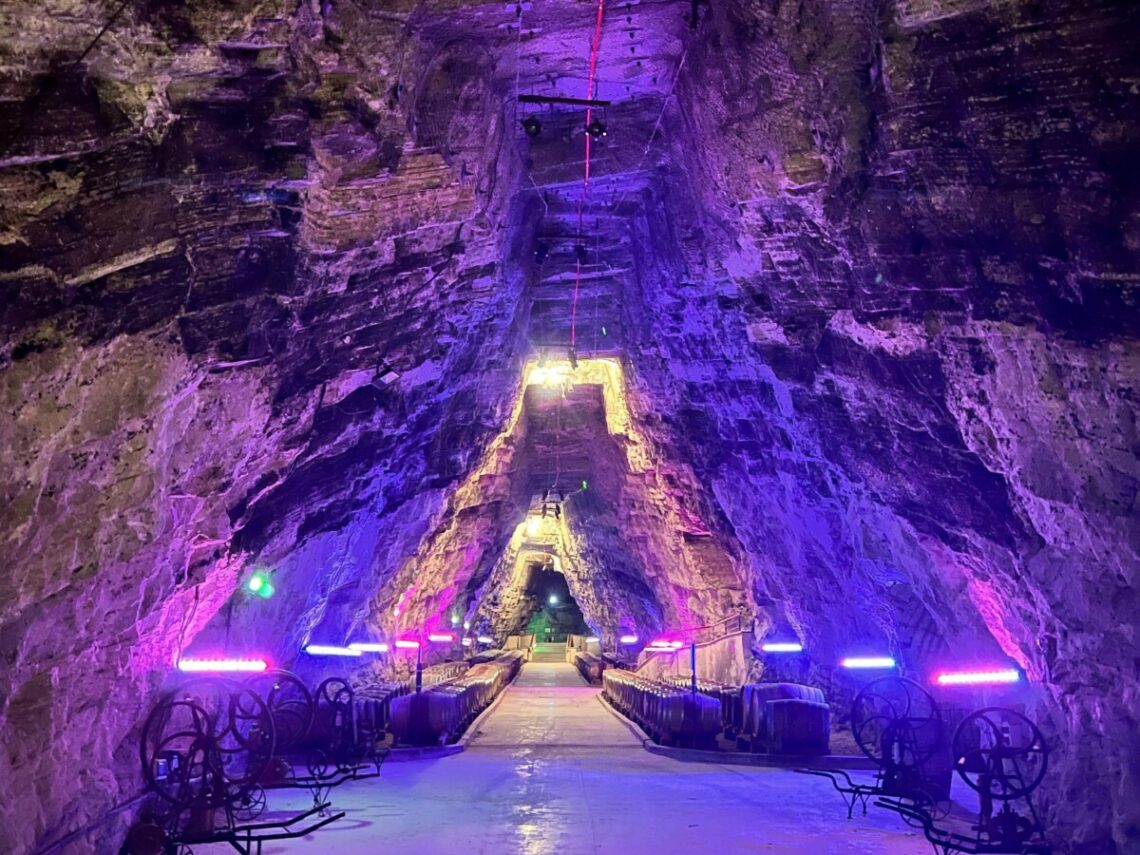
Terra Vinea – Good use of an old mine
Terra vinea is located in the small town of Portel-des-Corbières, where most of the men worked in the gypsum mines on the outskirts of town. So what do they do when the mines are to be closed down?
The mines in Portel-des-Corbières opened in 1807 and until 1992 gypsum was extracted and sold all over the world. The gypsum in the mine is crystal-like and when converted to a white powder, is used as chalk, in plaster and as a fertilizer.

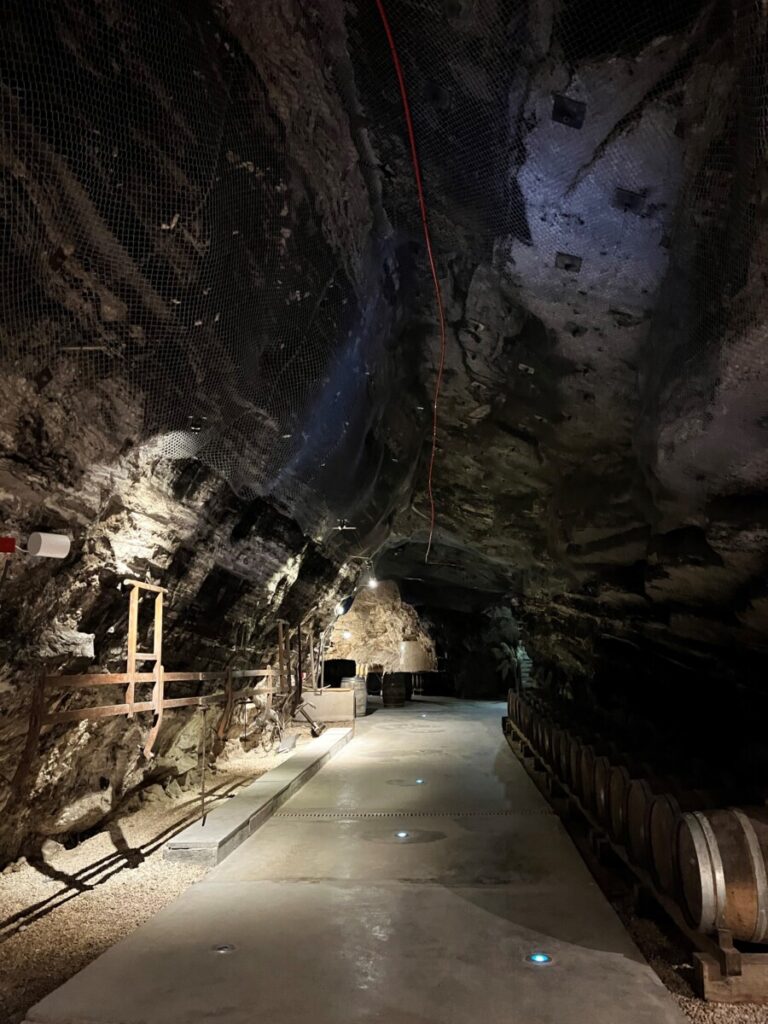
But as with most mines, they run out at some point or the product is extracted more cheaply elsewhere. The owners wanted to sell the mines to another company, but the locals had other ideas.
For years they had also been allowed to store their wine barrels there. Corbières is a well-known wine district in Languedoc and most of the miners were also wine farmers in their “spare time”.
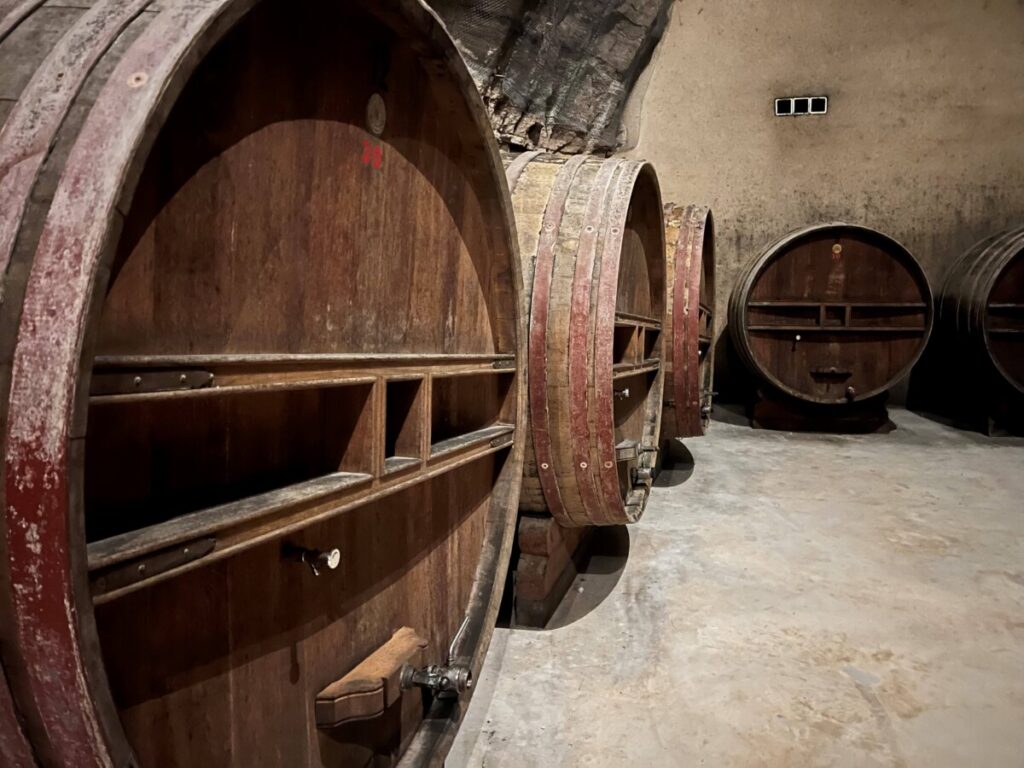
The mining company listend to the locals and allowed them to take over the old mines and in 1994 Terra Vinea opened. It provides an exhibition about the history of wine in France and in the Languedoc.
In the neighbourhood
I’ve been following them on Instagram for a long time and finally it was time for a visit. After all, we have our house nearby. A visit to a mine is a great option when the weather is either too bad or too good, meaning too hot, to do anything else. The temperature is a constant 16 degrees, all year round.
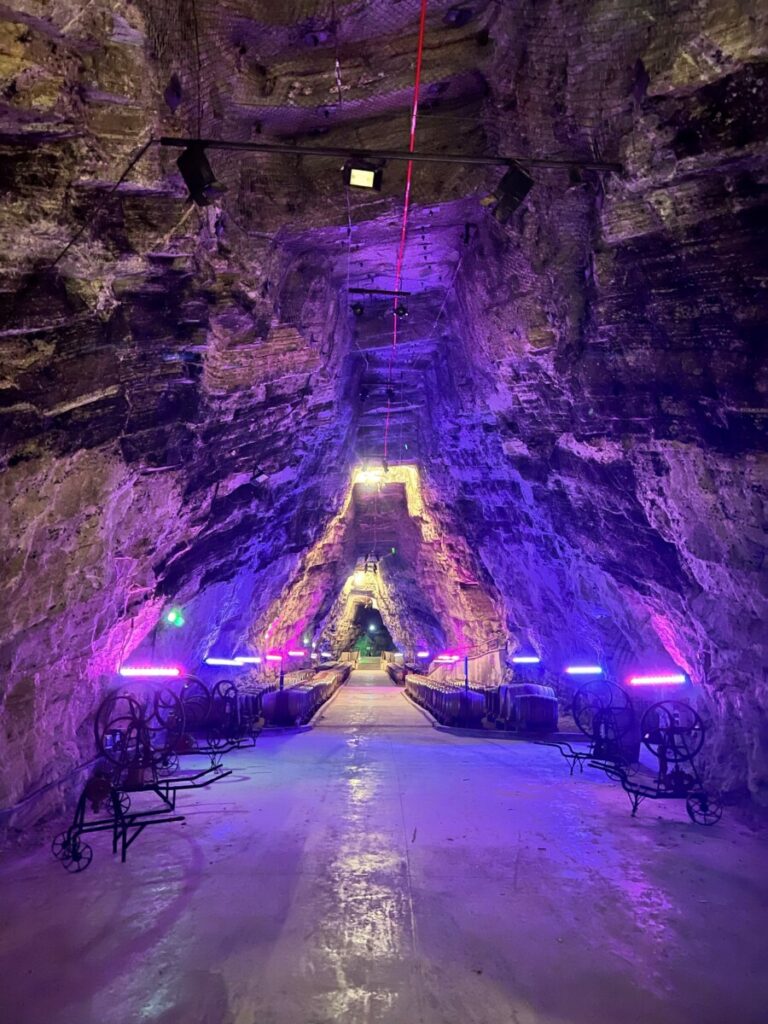
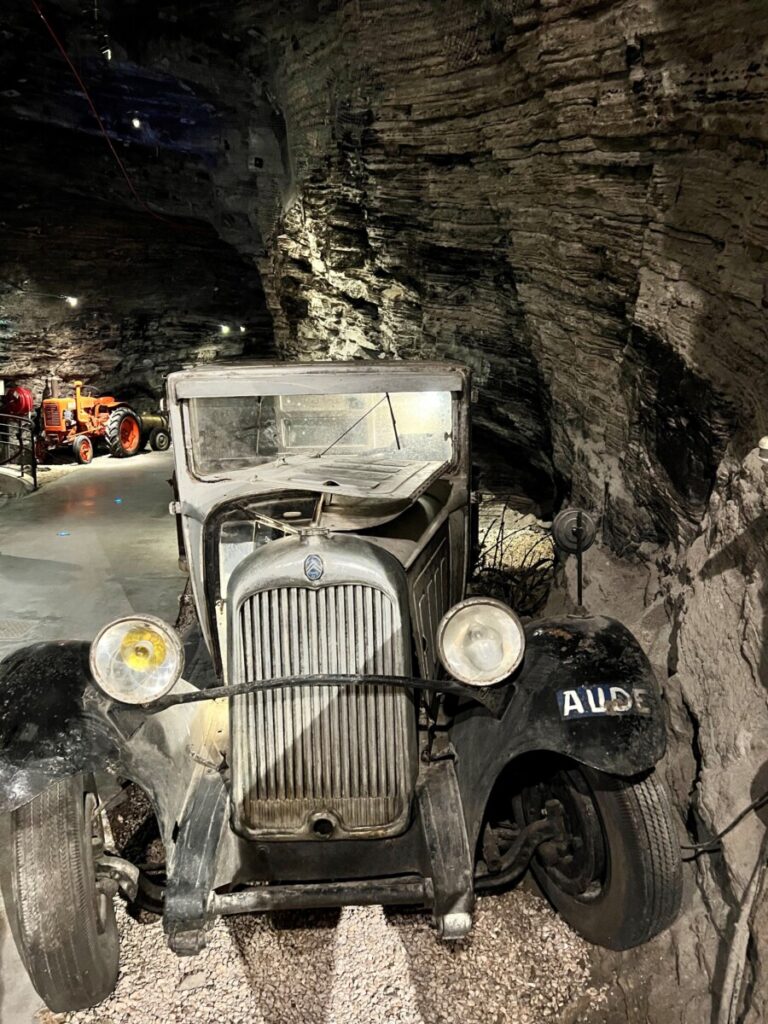
We had booked tickets online in advance. The transportation from the main entrance is done by a small train, and it leaves at specific times.
Behind the somewhat anonymous door, we step into another world. We were lucky to have the whole place to ourselves, so a visit outside high season is recommended. The stairs down give a good impression of what to expect. It welcomes us and leads us down into the mines. It has been rebuilt exactly as the old mine shafts were, with logs from the area.
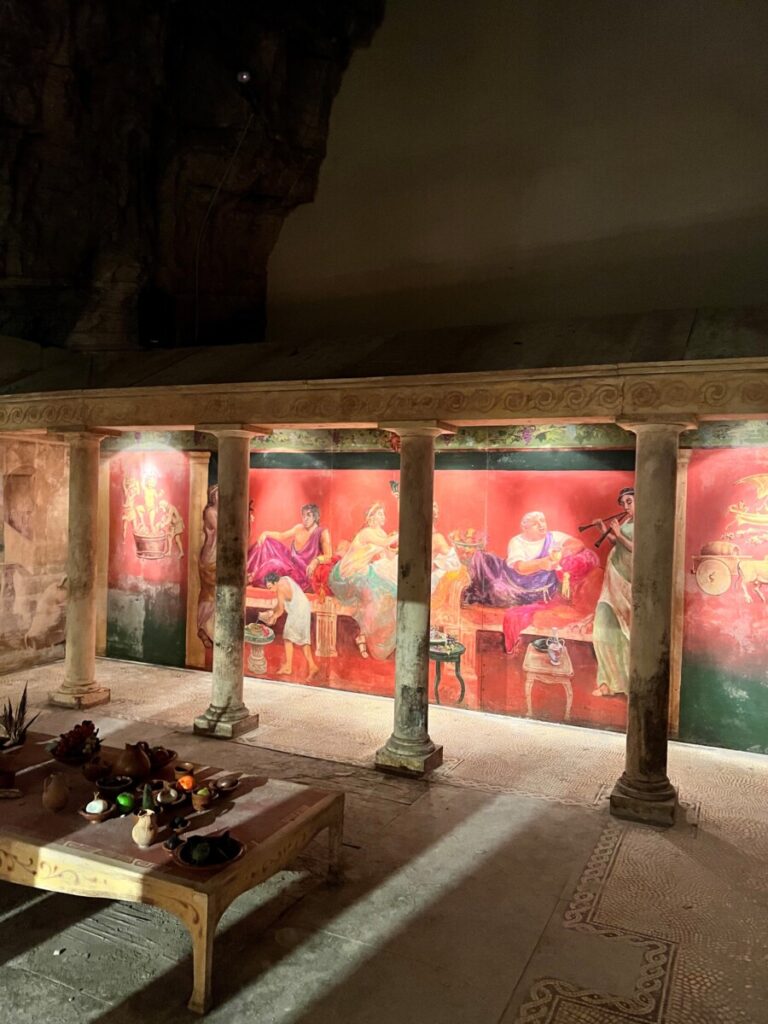
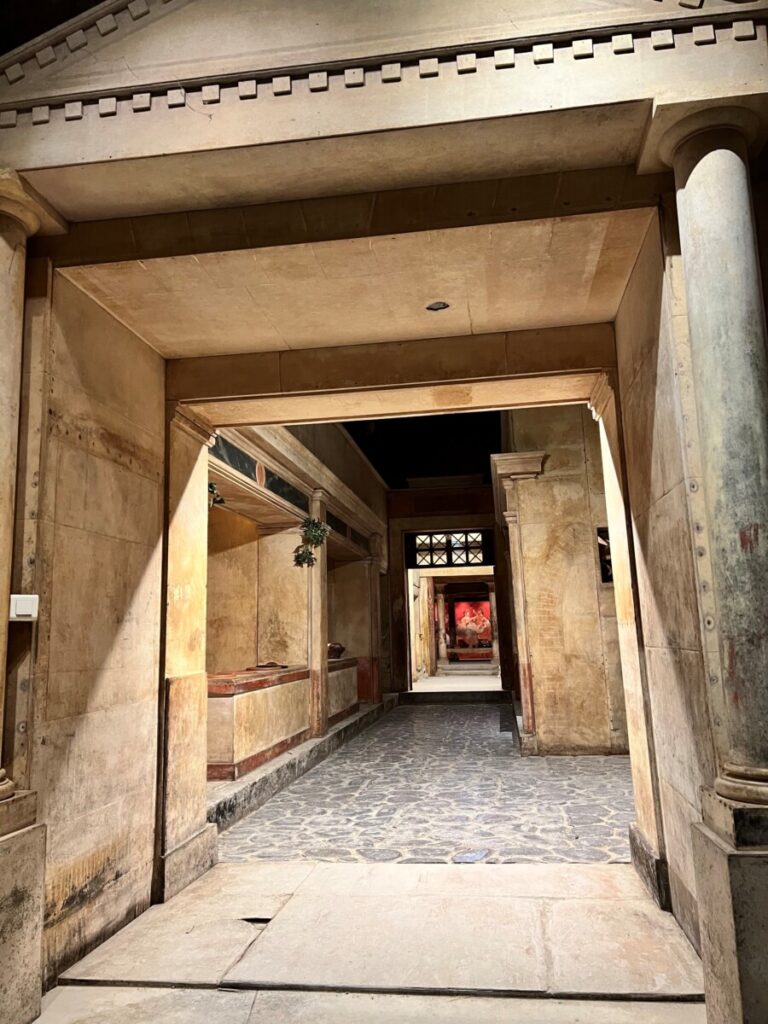
Lights and sound turn on automatically when we approach. There are several scenes showing the history of wine. Particularly impressive is the Roman villa that you can walk through. There is also feast table from the Middle Ages and we recognize the outline of Carcassonne.
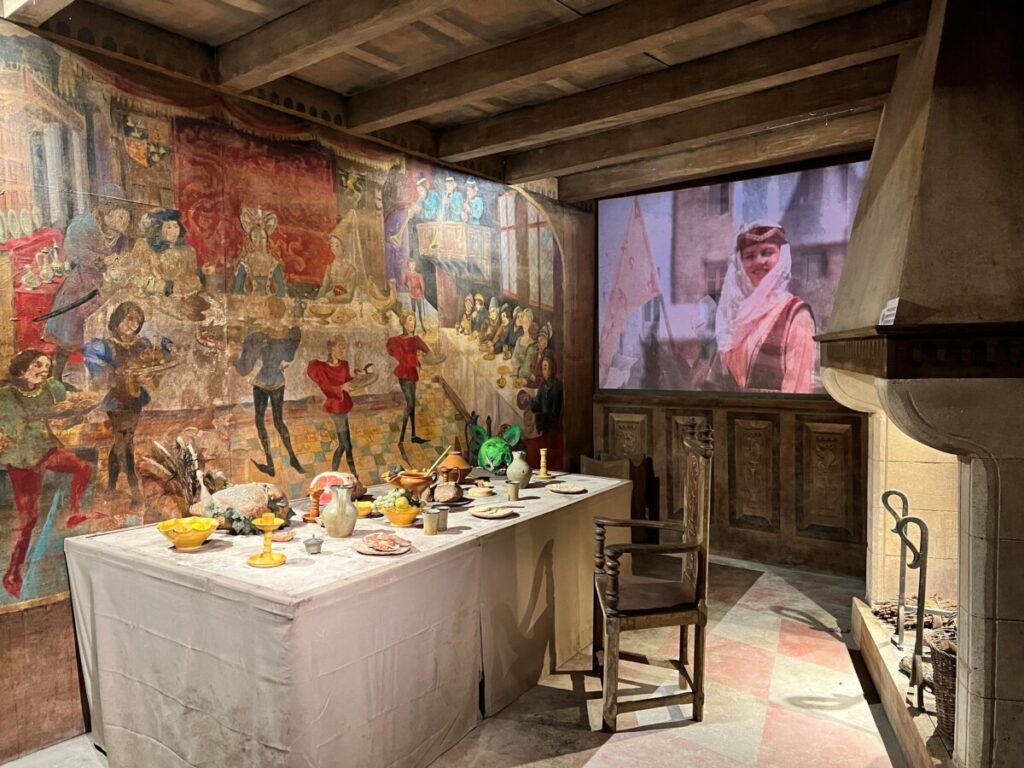
There are, of course, wine barrels everywhere, and local wineries still have storage and wine tastings in the mines.
History of wine
We learn about cultivation, harvesting and production of grapes and wine. There are tools and equipment on display and thankfully we get explanations in both French and English. There are a couple of movies but those are in French. But it doesn’t feel like we’re missing out.
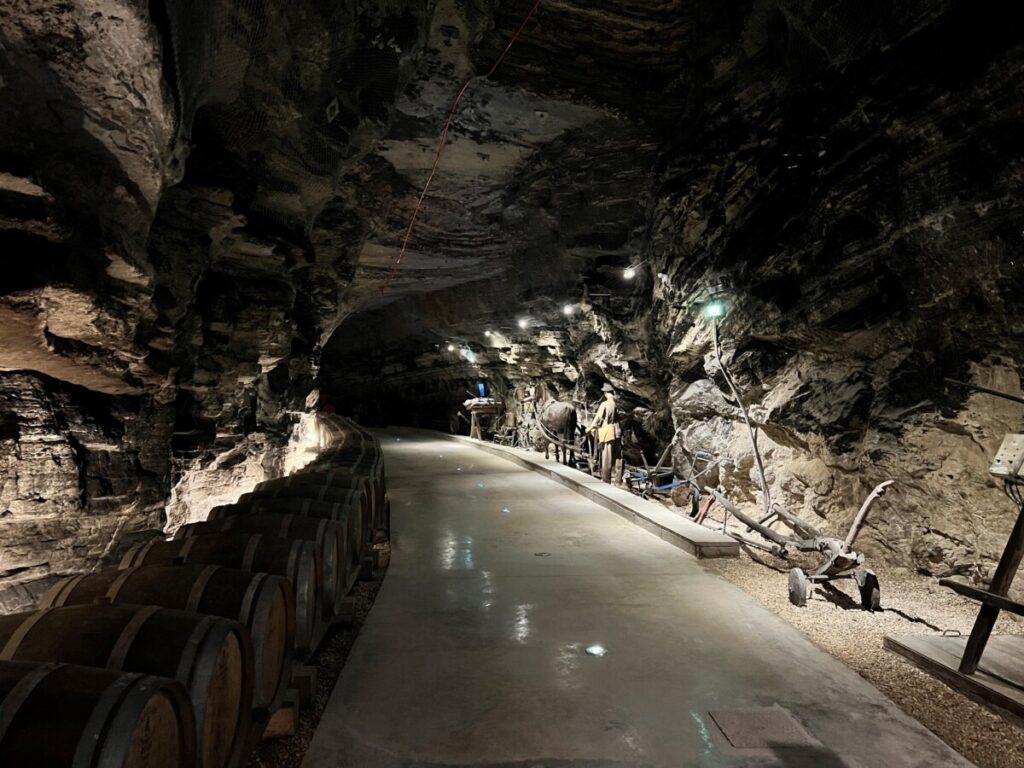
After about an hour and a half we are done with the tour and go out into the daylight and warmth again. A short stroll takes us back to the building which houses the reception, restaurant and shop. The ticket includes a wine tasting bien-sûr, and we buy a few bottles to take home.
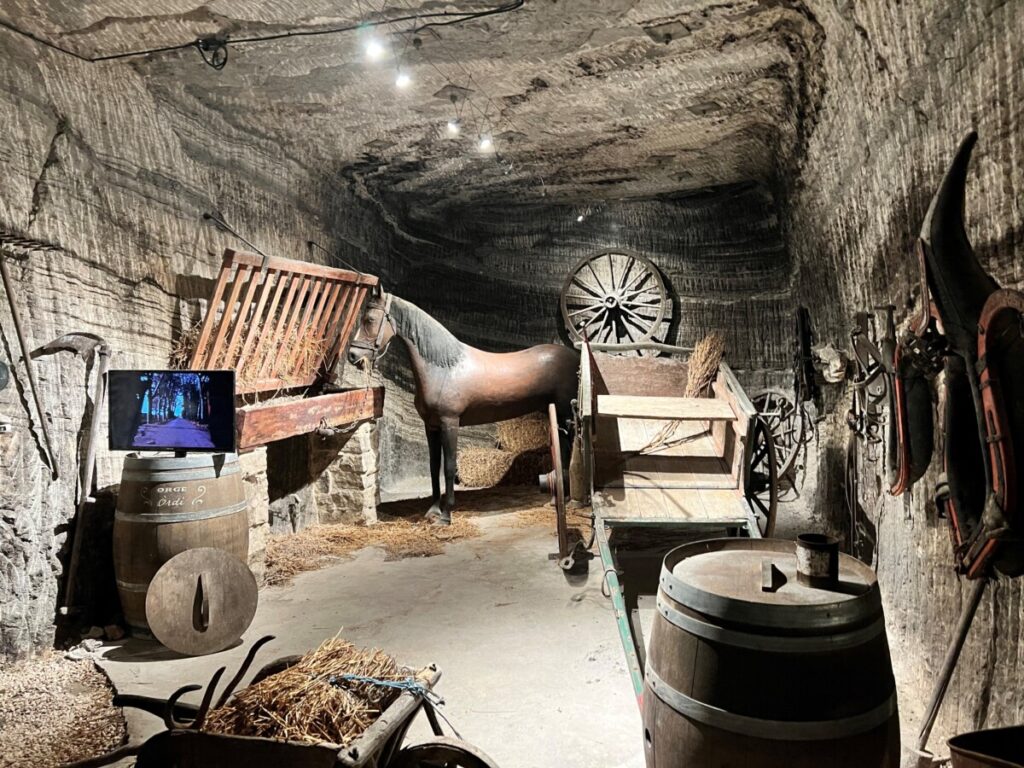
It is also possible to have lunch there before or after a tour and it is particularly good for larger groups. I assume large pre-booked groups will have their own guide. The whole experience was almost surprisingly good. I can definitly recommended a visit to Terra Vinea if you are in the area.
Another child friendly visit in the area is the African reserve animal park in Sigean.
If you want to live in luxury, why not stay at Château l’Hôspitalet where you can visit one of Languedoc’s most famous wine producers, Gérard Bertrand.


One Comment
Pingback: